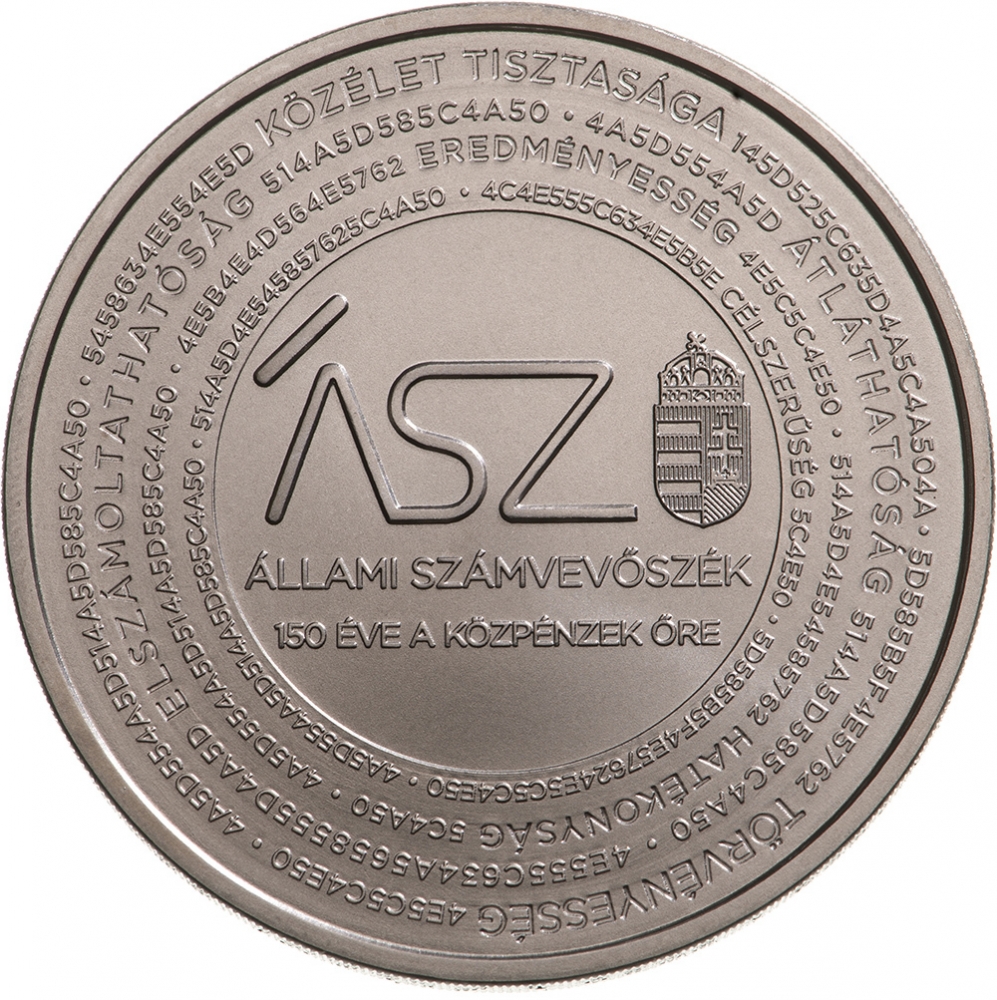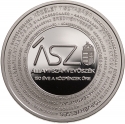You are about to finish your registration. Please check your mailbox (including spam folder). There should be a letter with a confirmation link. Check setting to make sure that your e-mail address is correct.
Send letter againDescription
The Magyar Nemzeti Bank issued commemorative coins to mark the 150th anniversary of the State Audit Office's foundation and the 30th anniversary of the National Audit Office's independent auditing resumption. The State Audit Office, as Parliament's main financial and economic control body, ensures the efficient and effective use of public funds.
Established in 1870 as the Hungarian Royal Supreme State Audit Office, it maintained independence from the government until its termination by decree in 1949 amid political changes after World War II. Re-established on January 1, 1990, alongside the proclamation of the Third Hungarian Republic, the State Audit Office, or ÁSZ, operates in accordance with the Basic Law to promote transparency in public finances through value-creating audits and extensive knowledge-sharing activities.
Engraver: Balázs Pelcz
Obverse

|
Depicts the State Audit Office's official logo with the inscription "150 YEARS THE GUARDIAN OF PUBLIC FUNDS" below. Enclosed within a raised circular ring, the logo bears the values upheld by the Court of Auditors in capital letters and hexadecimal codes: LEGALITY, TRANSPARENCY, ACCOUNTABILITY, CLEANLINESS, EFFICIENCY, and PURPOSE. ÁSZ |
|---|---|
Reverse

|
Depicts the building of the former Hungarian Royal Supreme State Audit Office. Integrated into the depiction, at the bottom right, is the engraver's privy mark. Around the edge, the circular inscription at the top reads "HUNGARY", at the bottom is the denomination and the word "FORINT." On the left side is the "BP." mint mark, and on the right side, vertically, the year of issue "2020" is inscribed. Under at least tenfold magnification, the mint mark reveals micro-engraving with letters identical to the mint mark's given letter. MAGYARORSZÁG |
| Edge |
Characteristics
| Type | Commemorative Issue (Non-circulating) |
| Material | Copper Nickel |
| Weight | 30.8 g |
| Diameter | 38.61 mm |
| Thickness | - |
| Shape |
|
| Alignment | Medal |
| Mint |
Budapest Mint (BP)
|
Related coins
150th Anniversary of the State Audit Office



